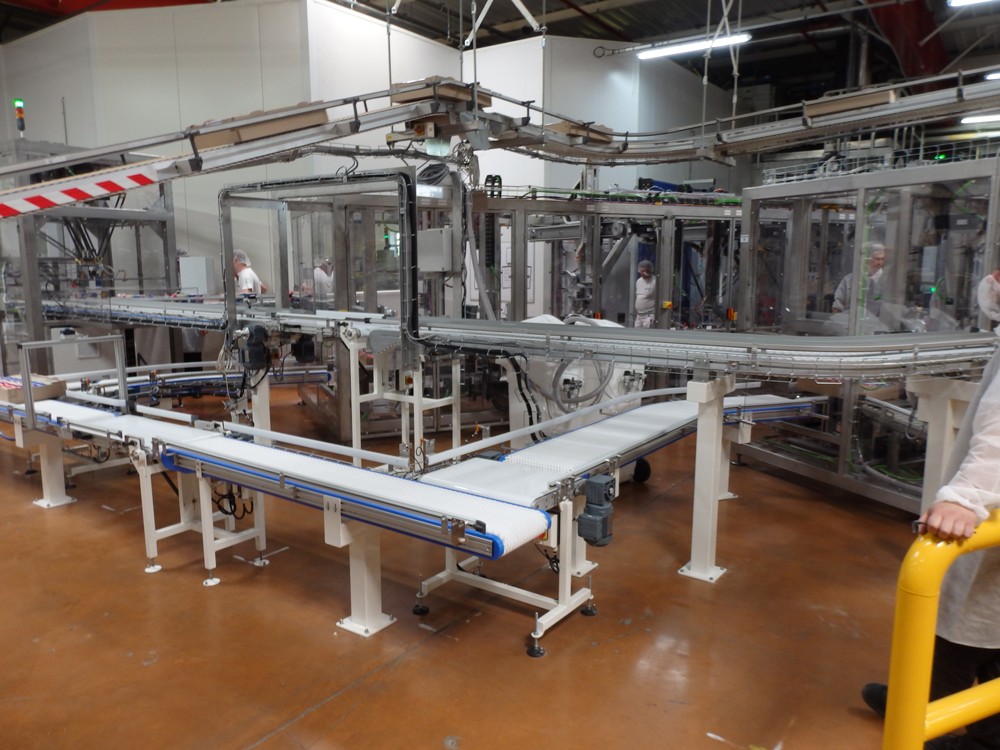Ingenious Industrial Packaging Solutions: Elevating Your Products
Ingenious Industrial Packaging Solutions: Elevating Your Products
Blog Article
Effective Industrial Recycling Solutions for Lasting Packaging: A Comprehensive Guide
That's where this extensive guide on effective industrial recycling services for lasting product packaging comes in. By exploring vital areas such as packaging product choice, designing for recyclability, applying reusing infrastructure, teaming up with recycling partners, and monitoring and gauging recycling success, this overview will outfit you with the knowledge and devices needed to make educated decisions and drive favorable adjustment within your organization. Whether you're a product packaging expert, sustainability supervisor, or simply interested in the topic, this guide will provide useful understandings and strategies to aid you navigate the world of lasting packaging.
Product Packaging Product Selection
The selection of packaging products plays a critical role in making sure the sustainability of commercial reusing services. When it pertains to lasting product packaging, the selection of products is type in decreasing environmental effect and making the most of recycling effectiveness. Selecting the appropriate products can help in reducing waste generation, preserve sources, and advertise a round economic climate.
One crucial aspect to think about in packaging material option is recyclability - industrial metal packaging. Products that can be conveniently reused and integrated back into the manufacturing cycle are preferred. For instance, products like cardboard, paper, glass, and specific types of plastics can be reused several times without shedding their top quality. On the various other hand, materials that are difficult to recycle, such as non-recyclable composites or blended plastics, can create obstacles for the reusing procedure and may finish up in burners or land fills.
An additional factor to consider is making use of naturally degradable and eco-friendly materials. Packaging made from renewable sources, such as plant-based plastics or biopolymers, can assist lower dependency on nonrenewable fuel sources and mitigate climate modification. In addition, biodegradable materials damage down naturally in time, lowering the accumulation of waste in garbage dumps.
In addition, the weight and quantity of product packaging products need to be minimized to lower transportation costs and energy usage. Light-weight materials not only need less sources throughout manufacturing however additionally add to lower carbon exhausts during transport.
Creating for Recyclability
In order to ensure the recyclability of packaging materials, thoughtful design is crucial. Creating for recyclability entails creating product packaging that can be easily arranged, separated, and processed in recycling facilities. One crucial facet of making for recyclability is the selection of materials. Packaging designers must prioritize making use of materials that are commonly accepted for recycling and have actually established reusing infrastructures. Materials such as glass, aluminum, and specific sorts of plastic, like family pet and HDPE, are commonly reused and need to be chosen over materials that are expensive or challenging to reuse.
One more critical factor to consider in making for recyclability is the elimination of unneeded elements or products. By lessening the variety of layers, finishes, and additional parts, product packaging can be made simpler and simpler to reuse. Additionally, designers need to aim to minimize making use of blended products, as they can make complex the reusing process.

Implementing Recycling Framework
Reliable application of reusing infrastructure is crucial for the success of commercial recycling services. Without appropriate infrastructure in position, the recycling procedure becomes inefficient and inadequate, impeding the total goal of sustainable product packaging.
To carry out reusing infrastructure successfully, numerous key variables need to be taken into consideration. Firstly, there useful content ought to be an efficient collection system that helps with the separation and collection of recyclable materials. This can consist of designated recycling bins in public rooms, in addition to partnerships with waste administration top article business for curbside pick-up and sorting.
Once gathered, the recyclable products require to be transferred to reusing facilities in a timely way. This needs reliable logistics and transport networks, guaranteeing that the products reach the appropriate facilities right away.
At the recycling facilities, progressed sorting and handling modern technologies should be in place to separate different types of materials efficiently. This includes using automated arranging makers, optical scanners, and hand-operated sorting methods.
Moreover, there need to be a robust market need for recycled products. This can be accomplished with collaborations with manufacturers and sectors that utilize recycled products in their production processes. Developing a steady market for recycled products incentivizes the reusing market and promotes the round economic situation.
Collaborating With Recycling Partners

One key facet of teaming up with reusing companions is the establishment of clear interaction channels. It is essential to establish open lines of interaction to promote the exchange of info, updates, and feedback. This permits both celebrations to stay informed concerning the development of reusing campaigns and attend to any kind of difficulties or issues that might occur.
Additionally, partnership can entail joint initiatives in applying and creating recycling programs. Reusing partners can give important understandings and assistance in creating effective collection systems and determining one of the most appropriate recycling modern technologies. By collaborating, businesses and recycling companions can optimize the reusing process and lessen waste.
Moreover, partnership can expand beyond the functional facets of recycling. It can additionally encompass advocacy and education and learning campaigns. By joining pressures, businesses and recycling companions can elevate awareness concerning the importance of reusing and advertise the adoption of lasting packaging techniques amongst customers and various other stakeholders.
Tracking and Measuring Recycling Success
To ensure the effectiveness of commercial recycling services and the success of sustainable packaging objectives, it is crucial for services and their reusing partners to establish a detailed system for this hyperlink tracking and measuring recycling success (processing company). Measuring and tracking recycling success allows companies to examine the effect of their recycling initiatives, identify locations for improvement, and set purposeful targets for future progression
One means to track reusing success is via the usage of information collection and analysis tools. By collecting data on the quantity of product packaging waste generated, the percentage of waste that is reused, and the kinds of products being reused, organizations can get useful understandings right into their recycling efficiency. This data can after that be assessed to determine patterns, patterns, and areas of ineffectiveness.
One more essential aspect of monitoring and gauging reusing success is developing clear and standard metrics. This allows businesses to contrast their performance against sector standards and track their development in time. Metrics such as reusing prices, waste diversion rates, and greenhouse gas discharges can offer a measurable procedure of a service's recycling success.

Final Thought
Finally, implementing reliable industrial recycling options for sustainable packaging calls for cautious consideration of product packaging product option, creating for recyclability, implementing reusing framework, working together with reusing companions, and monitoring and gauging recycling success. By including these techniques, businesses can add to a more environmentally-friendly and sustainable technique to product packaging, decreasing waste and advertising the circular economic situation.
By exploring key locations such as product packaging material option, developing for recyclability, executing recycling facilities, teaming up with recycling companions, and tracking and determining reusing success, this guide will outfit you with the understanding and devices needed to make informed decisions and drive favorable change within your organization. Product packaging designers need to prioritize the use of products that are extensively accepted for recycling and have actually established recycling frameworks.Collaboration with recycling partners is important for the successful implementation of commercial reusing solutions and the accomplishment of sustainable packaging objectives. By joining pressures, companies and recycling companions can elevate recognition concerning the importance of recycling and promote the adoption of sustainable product packaging methods among customers and various other stakeholders.
By accumulating information on the quantity of product packaging waste generated, the percent of waste that is reused, and the types of materials being recycled, companies can gain important insights into their recycling performance.
Report this page